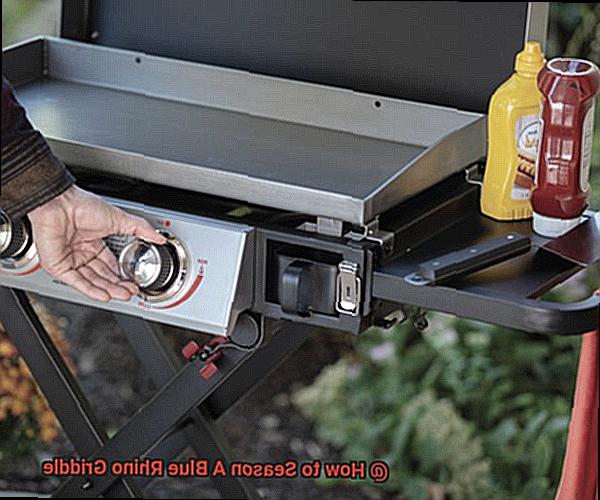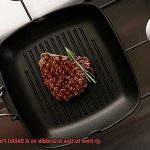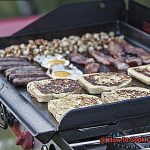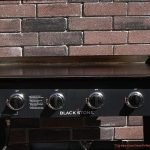Do you want to make your Blue Rhino Griddle even more delicious? If so, you’ve come to the right place. Seasoning your griddle is an important step in making sure that your food comes out fresh and juicy every time. Here’s how to season a Blue Rhino Griddle for maximum enjoyment.
Why is seasoning so important? It creates a non-stick coating on the surface. This helps prevent food from sticking and burning, while adding flavor too. Plus, it keeps the griddle’s surface free of rust and other damage caused by heavy use.
Now let’s learn how to do it properly. Heat up your griddle until it reaches at least 400 degrees Fahrenheit. Apply a thin layer of oil or fat (such as lard or vegetable oil) all over the surface using a paper towel or cloth once it’s hot. Make sure to spread it evenly across the entire surface, then let sit for at least ten minutes before wiping off any excess with another paper towel or cloth.
Finally, turn off the heat and allow your griddle to cool completely before using again. You did it. You’ve successfully seasoned your Blue Rhino Griddle. With proper care and maintenance, this non-stick coating should last for many years of tasty meals ahead.
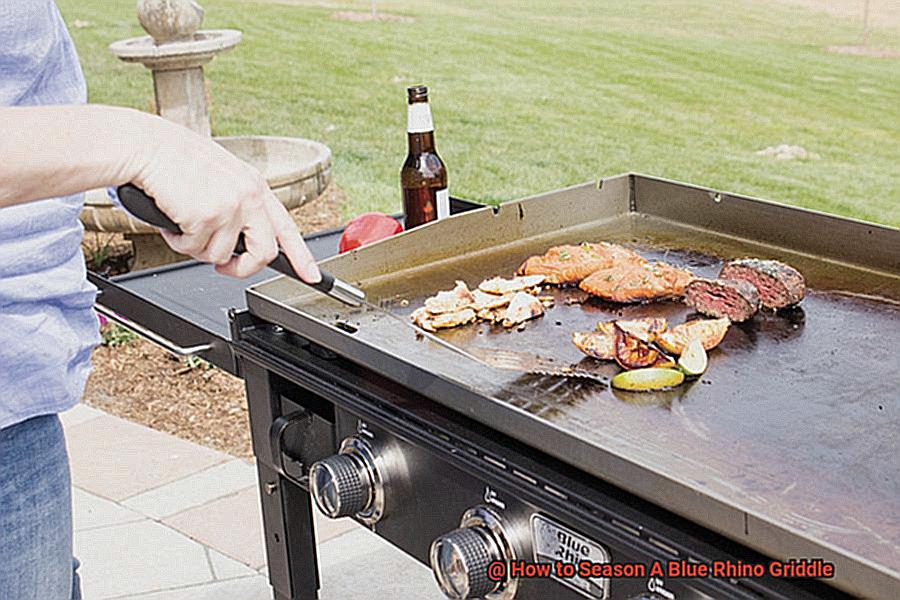
Contents
How to Season A Blue Rhino Griddle
Thoroughly Clean the Griddle
Creating delicious meals on your Blue Rhino griddle starts with proper cleaning. This will ensure that all manufacturing residues and dirt are removed from the surface, so that the seasoning will adhere well and create a non-stick coating.
To begin, use a scraper or brush to remove any loose debris. Then, mix warm water and mild dish soap to scrub the griddle with a non-abrasive sponge or cloth. Rinse it off thoroughly and dry completely with a towel.
Be sure not to soak your griddle in water as this may cause rusting, nor should you use abrasive cleaners like steel wool or harsh chemicals which can damage its surface.
Now that your griddle is clean, it’s time for seasoning. Heat it up on medium-high heat and spread oil over the surface for 20-30 minutes. This will create a protective layer of non-stick coating that also guards against rust and corrosion. For best results, repeat this process two to three times.
Apply Oil to Create a Non-Stick Surface
Bring out the best in your Blue Rhino griddle with the second step of seasoning – applying oil to create a non-stick surface. After cleaning and drying off your griddle, give it a luxurious oil massage with one of the many options such as vegetable, canola, flaxseed or coconut oil. Spread the oil evenly with a paper towel or cloth.
Turn up the heat and let your griddle sit for 15-20 minutes while the oil begins to solidify, forming a bond with the griddle’s surface and creating a non-stick coating. Keep an eye on it though – if it starts to smoke or burn, turn off the heat and let it cool before starting again.
Repeat this process two to three times until you get a dark brown or black coating on the exterior. Congratulations. Your griddle is now ready to provide you with years of delicious meals.
Preheat the Griddle on Medium-High Heat for 20-30 Minutes
Properly seasoning your Blue Rhino griddle is essential for making delicious meals. To achieve the perfect non-stick coating, preheat the griddle on medium-high heat for 20-30 minutes. This will allow the oil to bond with the cast iron surface and create a protective layer.
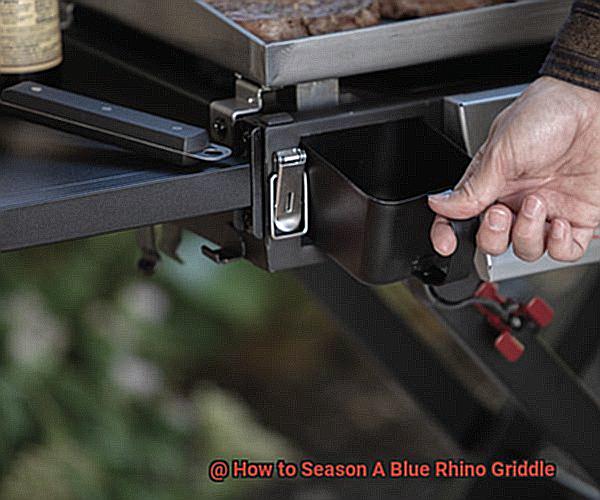
It’s normal to experience smoke or smell while preheating your griddle – this is simply the oil bonding to its surface. To avoid any potential harm, make sure to keep your kitchen well ventilated during this process.
Once you’ve preheated your griddle, spread a thin layer of high smoke point oil (such as vegetable or canola oil) across its entire surface. Allow it to heat up for an additional 10-15 minutes before wiping off any excess with a paper towel.
Let the Griddle Cool Down Completely
Seasoning your Blue Rhino griddle is an essential part of keeping it in top condition for delicious meals. After preheating the griddle on medium heat and coating it with a thin layer of oil, it’s time to let the griddle cool completely. This step is vital in order to protect the griddle’s surface and seasoning layer from any damage.
The cooling process may vary depending on the type of griddle you have. A cast iron griddle, for instance, may take longer due to its thickness and ability to retain heat. You should avoid pouring cold water on the griddle as this can cause warping or cracking of the metal. Instead, let it cool naturally until it reaches room temperature.
Once cooled, your Blue Rhino griddle will be ready to use. This step helps ensure that the seasoning layer is fully cured and provides better non-stick performance when cooking.
Repeat the Oiling and Heating Process 2-3 Times
Seasoning it is the key to unlocking its full potential. Although the initial seasoning process is essential, repeating this process 2-3 times (or even 4-5 times if you’re extra cautious) will create a robust layer that will protect your griddle from rust and other forms of damage.
It’s easy to do: simply apply a thin layer of oil, rub it in with a cloth, and then heat the griddle until it reaches a high temperature. Once cooled down, wipe off any excess oil and begin again. By repeating this process several times, you can be sure that your griddle will be ready for any culinary adventure.
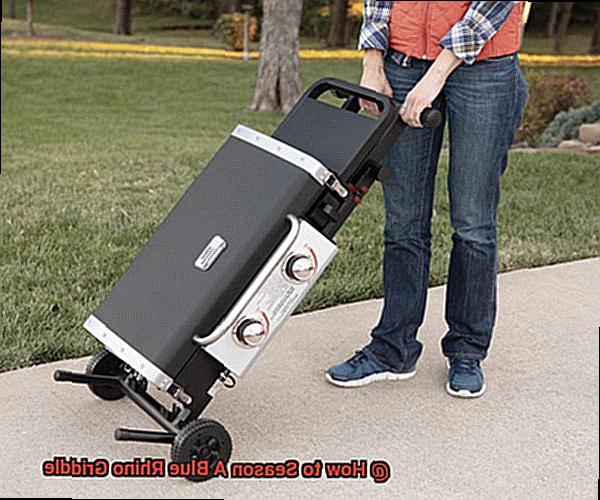
Don’t forget to maintain your griddle properly too: clean it regularly and avoid using metal utensils that could scratch the surface. With proper care, your Blue Rhino Griddle will last for many years and provide you with delicious meals every time.
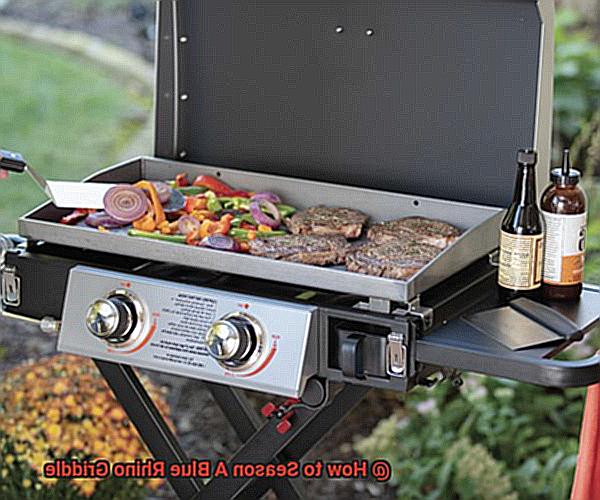
Maintenance Tips to Prevent Rusting
Rust can be a major problem for griddles, but you can take some simple steps to keep your Blue Rhino griddle in top condition and prevent rust from occurring.
Clean and Dry
After each use, wipe down the surface of your griddle with a dry cloth or paper towel to remove any moisture or food residue. This will help keep it clean and dry, which is essential for preventing rust. Additionally, store your griddle in a dry place when not in use.
Protective Coating
Once it’s been washed and dried, apply a food-grade rust inhibitor on the surface of your griddle to protect it from moisture and rusting. Follow the manufacturer’s instructions for application and safety precautions.
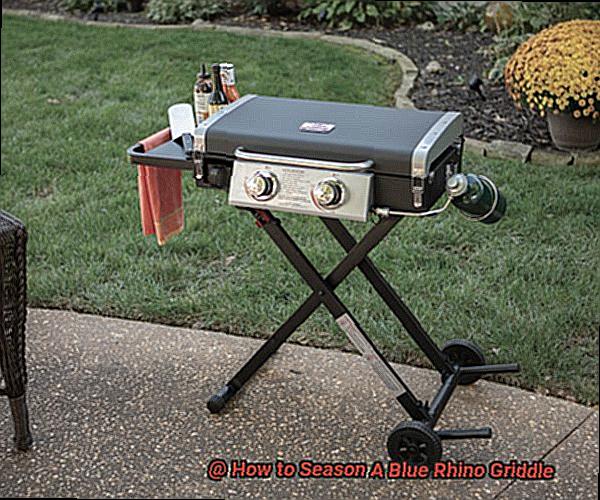
Avoid Abrasives
Harsh chemicals and abrasive cleaning tools can damage the seasoning of your griddle, making it more susceptible to rusting. Stick to gentle soap and water solutions or specialized griddle cleaners with soft cloths or sponges instead.
Address Rust Immediately
If you notice any rust forming on your grill, take care of it right away by using wire brush or sandpaper to remove the rust before cleaning the surface again and re-seasoning it. Ignoring rust will only lead to further damage and corrosion which can be difficult to repair.
Storing Your Griddle in a Dry Place
Maintaining your Blue Rhino griddle is essential for preserving its quality and preventing rust and other damage. To ensure your griddle stays in top condition, it’s important to store it in a dry place. Before storing, make sure the griddle is clean and completely dry as any moisture left on the surface can lead to corrosion and rust.
To properly store your griddle, use a paper towel or cloth to remove any excess oil or debris from the surface. Apply a thin layer of oil or cooking spray for extra rust protection, then cover the griddle with a clean cloth or towel to prevent dust or debris from accumulating on the surface.
When selecting a spot to store your griddle, choose wisely. Avoid damp or humid areas such as basements or outdoor sheds; instead, opt for a dry and well-ventilated location like a pantry or garage.
For optimal safety when using your Blue Rhino griddle after storage, always clean it thoroughly before cooking on it.
PDYsQ949JpU” >
Conclusion
Seasoning your Blue Rhino griddle is simple and satisfying. After cleaning and drying, apply a thin layer of oil or cooking spray, then cook it on medium-high heat for 20-30 minutes. Let it cool completely, then repeat the process two to three times. This will create a non-stick coating that shields against rust and corrosion.
When not in use, store your griddle in a cool place. Cover it with a cloth or towel to prevent dust from accumulating, and apply oil or cooking spray after each use for extra protection.

